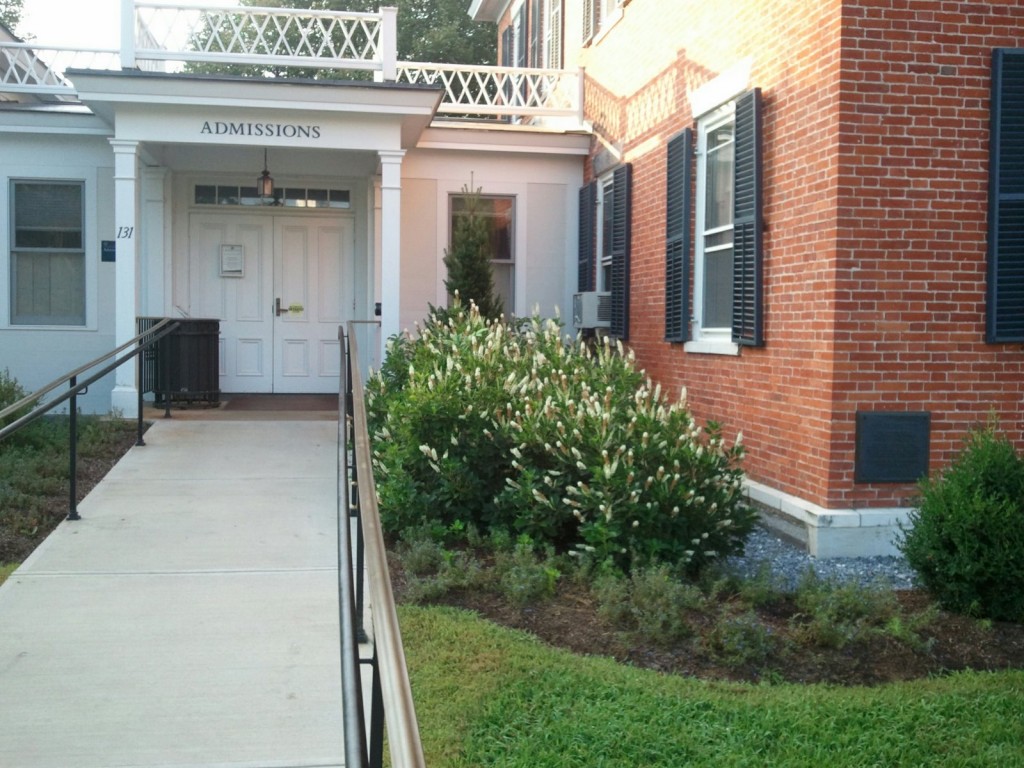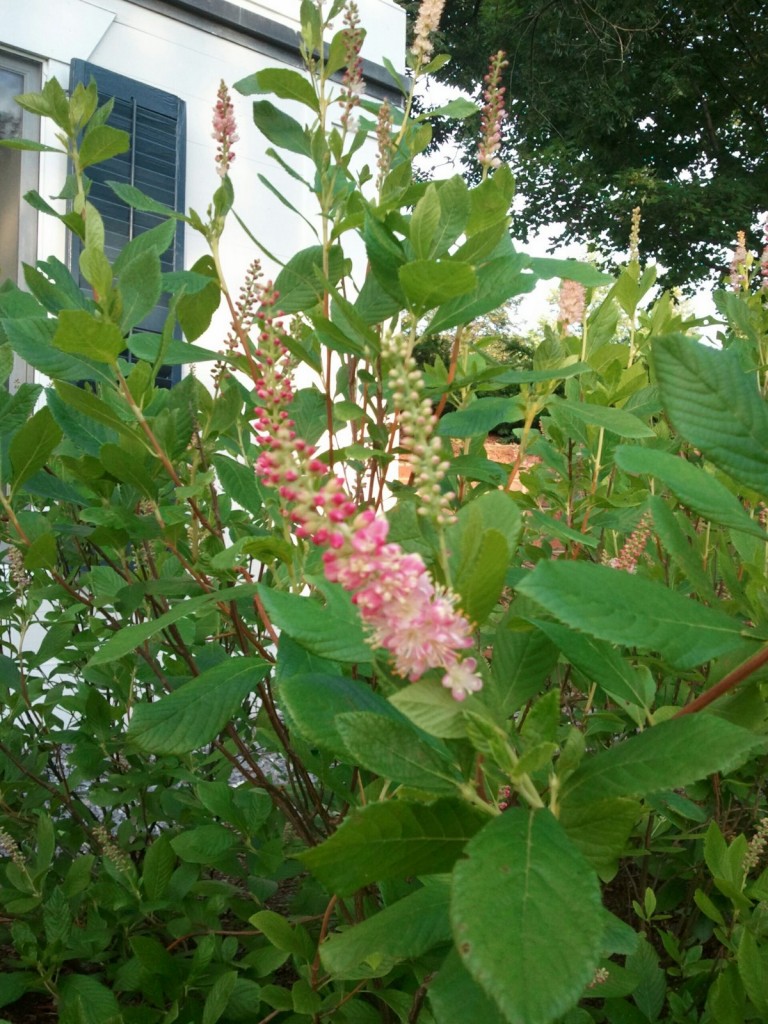For me, smell. Summersweet may well be my first plant love. The unique scent reminds me of a Connecticut childhood, wandering in the woods mid-summer, and smelling the spicy flowers for half a mile or more before coming upon the colony of undergrowth, sometimes a half an acre in size. Blooming now, and in fact for most of July as well, the plant sports long 3-4″ spikes of white (or pink, we’ll get to that) flowers, with a fragrance of, oh, vanilla and cloves together. Maybe that doesn’t even describe it, but is as lovely as it sounds.
Others know it as Sweet Pepperbush, for its small seedheads that look like little peppercorns, but without the taste. The latin is the rather unwieldy name of Clethra alnifolia, and is a native shrub to the east coast, from Florida all the way north to Maine and Nova Scotia. In fact, the only northeast state where Clethra is not found seems to be Vermont. Its marginal hardiness in zone 4 probably prevents it being found wild in our state, but this certainly doesn’t preclude use in the landscape.
Given the bright audacity of so much in the late summer landscape, the subtlety of Clethra in bloom is a refreshing change of pace. It comes from a forest understory provenance, so they naturally do best in shade, and prefer some moisture. Smart gardeners are drawn to shade in the heat, and while the hostas are looking tired and beat, summersweet glows bright and fresh. My lone plant at my house is in a dry shade, but the species seems to grow well in sun given sufficient moisture.
Even the leaves stay clean and lustrous all season, in various shades of mid to an almost black green, with a slight sheen on top. Fall brings a bright yellow gold, holding late in the year. Full grown plants range from 4-8′ tall, depending on moisture, and tend to be wider than tall owing to its suckering nature, sending new plants up from the roots.
Yes, by all means, dig those suckers up and pass them to friends you like.
Michael Dirr, in his Manual of Woody Landscape Plants, writes of seeing Clethra next to a water feature while shopping at L.L. Bean in Freeport, and “I got so excited I amost fell in taking photographs. L.L Bean is a terrific company plus they know their plants.” He raves on “if a retailer says he/she cannot find Clethra tell them Dirr said it is one of the easiet plants to grow at the commercial and garden levels and excuses will not be tolerated.”
In my 1990 copy Dirr lists 3 cultivars, and my 2009 copy over 25. I’ve grown some, and have opinions. The marginal hardiness of the species means some may not grow quite as well as others. A popular cultivar, Hummingbird, while a gorgeous dwarf at only about 3′, was discovered by Fred Galle in Northern Florida, and suffers from severe dieback in our northern state.’Hummingbird’ can also succumb to a nearly unforgivable genetic floppiness, which hopefully the sibling ‘Sixteen Candles’ has not inherited. I prefer ‘Compacta’ for it’s better hardiness- it was found in Tom Dilatush’s brother’s garden, the seed transported from the New Jersey Pine barrens in some leafmold-although this is a harder find in a garden center,.
Pink is another color worth persuing in the Clethra cultivar world. Ignore ‘Rosea’ and ‘Pink Spires’, both hinting of a light pink, but barely blushing, and look for ‘Ruby Spice’, a sport off of a Pink Spires discovered at Broken Arrow Nursery in Connecticut. The rich rose red color holds throughout its entire bloom cycle, even in the heat of August.
So why isn’t this just grown everywhere? As a plant for sale, Summersweet suffers several minor flaws that drove us crazy back in my garden center days. One is the fact it blooms late. While I can argue until I’m blue in the face that Clethra is integral to Any Garden, I was generally talking to myself, not customers, in the dog days of July and August, and our September shoppers were lured instead by the cheap thrills of red leaves and pumpkins. Springtime brought another headache. The species is very late to leaf out and show growth. So late, in fact, I’d taken to warning customers to not give up on the plant until the fourth of July, after too many experiecnes of seeing live plants return “dead” in May, an irate customer wanting their refund. They grow out of that. The plant, not the customer.
And when it does leaf out, it may leaf out low on the branch, suffering dieback. This seems to also happen to younger plants, although even my 10 year old plant still does this to some extent. The late bloom follows a long, late growing season, so this tender new growth may not have sufficent time to harden off before the Vermont winter. The plant blooms on new wood, so any dieback (or spring pruning) will not decrease flowers.
I’m sticking Summersweet everywhere I can on campus. Compacta is next to the main door at Emma Willard, tucked against the north side of the building. Ruby Spice is at the lower door. More plants are at Battell, and in a new planting in front of Pearson Hall. Another cultivar, Sherry Sue, sporting bright red stems and a large size, is planted on the north side of Axinn, where the last two winters have been a little tough on them, but I’m still rooting for it.

